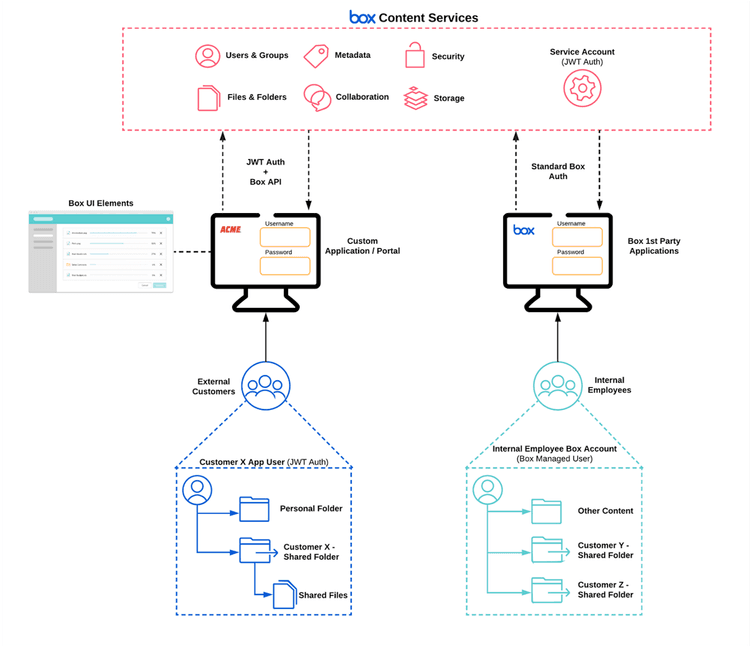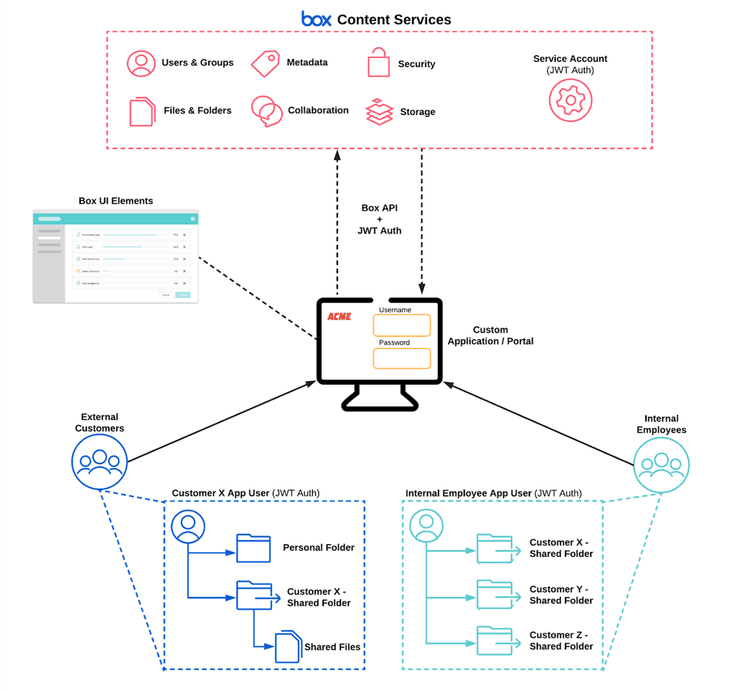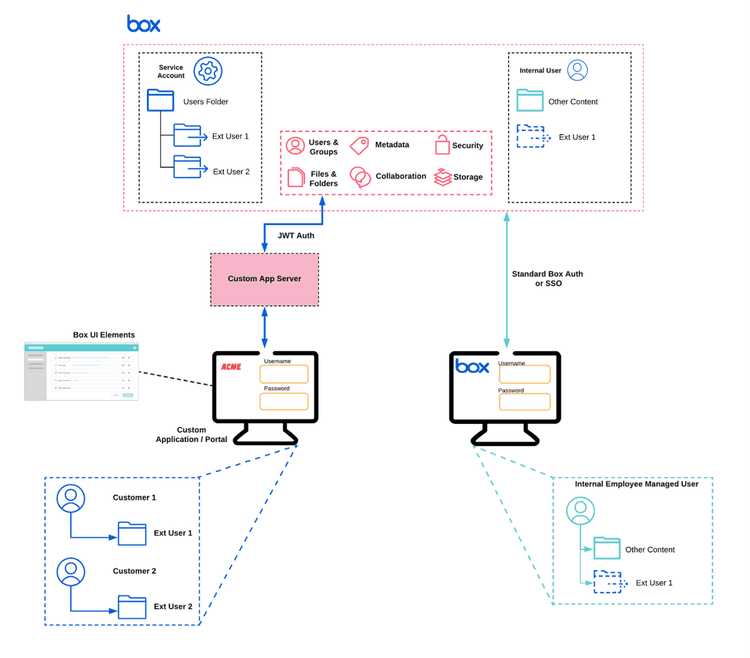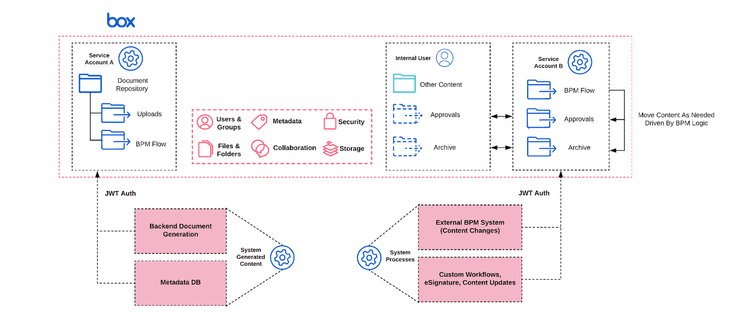User Models
User Models
Once you confirm your use case is a good fit for Box Platform and you have a solid understanding of the types of users involved, you can select a user model to begin application architecture.
Classic
In this model, the application has internal and external users. The external users share or collaborate on content with internal users who use the Box web application.
- Internal User Type: Managed Users
- External User Type: App Users
- Content Owned By: Application Service Account or Managed Users
- Examples: Vault Portals, Document Submissions, Field Worker Applications
Benefits of this user model:
- Removes the need to build additional functionality for internal users
- Allows App Users to be mapped to your own identity system like
Auth0 - Allows reporting on all actions to meet to meet security and compliance requirements
App User
In this model, the application has internal and external users who all leverage the same custom UI.
- Internal User Type: App Users
- External User Type: App Users
- Content Owned By: App Users
- Examples: Vault Portals, Document Submissions, Field Worker Applications
Benefits of this user model:
- Allows for a custom experience for internal and external users
- Separates managed user and application content by allowing managed users to have separate App User accounts
- Allows App Users to be mapped to your own identity system like
Auth0 - Allows reporting on all actions to meet to meet security and compliance requirements or tracking in other systems
Service Account
In this model, the application has internal and external users, but the user object already exists. This model also works well when users are transient in nature, but the content must persist.
- Internal User Type: Managed Users
- External User Type: Managed by your customer’s applications
- Content Owned By: Application Service Account
- Examples: Wealth Management Portal, Insurance Claim Workflow
Benefits of this user model:
- Useful when the App User model would complicate existing applications
- Useful when there is not a good 1:1 end user/app user mapping, such as users mapped as groups
- Permissions are easier to manage, since the Service Account owns all content
- Ability to implement a token exchange to ensure that broad scoped access to the Service Account does not occur
System to system
In this model, no user content normally needs to be handled.
- External User Type: N/A
- Internal User Type: N/A
- Content Owned By: Application Service Account
- Examples: Back Office Applications, Integrations, User Provisioning, Folder Auto-Creation
Benefits of this user model:
- Useful when user construct isn’t needed (e.g. departmental or company owned content that transcends user ownership)
- Allows for complete control of permission assignment to backend services since the Service Account can be granted elevated privileges



